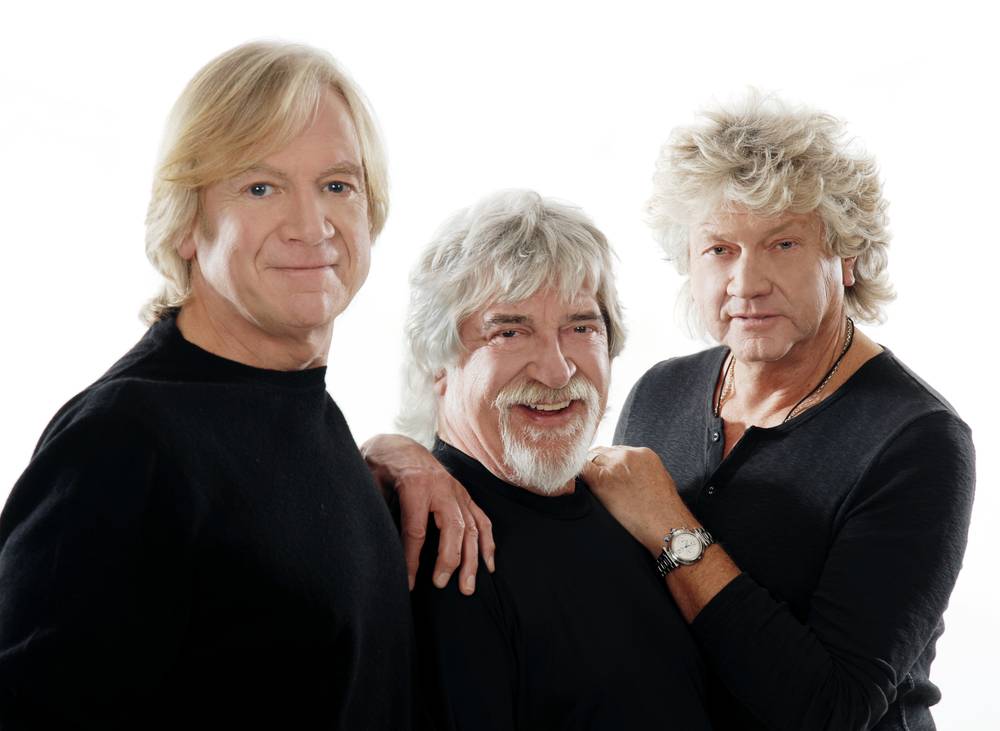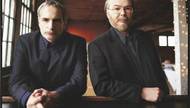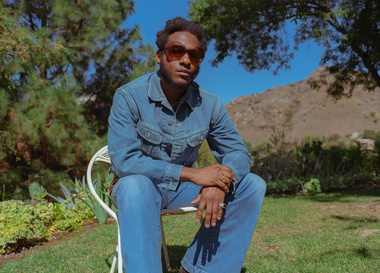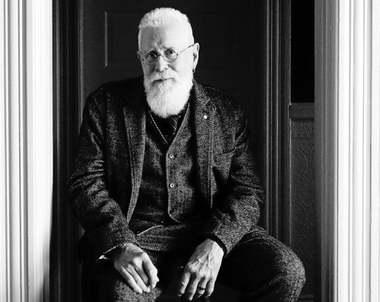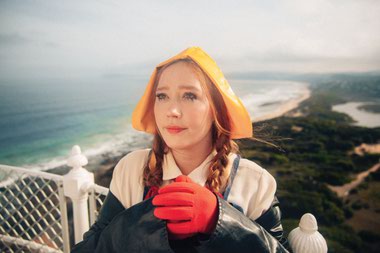The Moody Blues land at the Venetian this weekend, playing their first shows together since April. They’ll present a retrospective look back through their catalog, which now stretches across more than five decades. Their classic Days of Future Passed album marks its 50th anniversary next year. We spoke with bassist John Lodge, who checked in from his English home to talk about the milestone and what fans can expect from the Vegas shows.
The Moody Blues have a long history with Vegas. I’d imagine you have some good memories of coming here. I’ve always enjoyed going to Vegas. Where Las Vegas is, right in the middle of the desert, is wonderful, to get out there under the red rocks as well on days off and go visit different things. Golf is always a good one for me. And sitting down around the pool, that’s always really nice.
As a musician and an artist, you have this feeling that it would be wonderful if the audience would come to you. And Vegas seems to do that. You know, you’ve got everyone from all over the U.S. and Europe really, who come to Vegas, and they’ll come and see the artists. So that becomes very special. You know the audience is there to see you.
Are you a good golfer? Yeah, but I don’t play enough. I’ve got a 10 handicap, so I’m quite pleased with that.
For this particular engagement, you’re going to be in one place for five nights. How does that change the dynamic of the show? The show we will do will be obviously the songs that we have to do, like “Nights in White Satin,” “Tuesday Afternoon,” “I’m Just a Singer (In a Rock and Roll Band).” We love doing them anyway, because they’re our songs. When we’re on the road, the show is divided into two parts with an intermission. When you’re in Vegas, it’s a 90-minute show straight through, so hopefully we can take the audience [on a journey], and hopefully they’ll experience it like listening to an album.
For me, if I go and see an artist, I like the emotion from when I’ve bought the records to be the same real emotion that I get when I’m watching an artist play live onstage. I don’t really want them to interfere too much with the song. To me, it’s important that what you’ve got on a record actually comes over onstage. You may change the dynamic of it a little bit, you may put more energy into it. “Nights in White Satin,” we probably put a lot more energy into live, because you’re trying to get that emotion over. You’re trying to get that adrenaline, and you’re trying to get the shiver on the back spine.
Looking at the setlist you’ve been playing on your recent solo tour, it’s cool seeing stuff like “Candle of Life” from the Moodies catalog in there, “Saved by the Music” from the Blue Jays album. What brought you back to those particular tracks? “Candle of Life” we recorded in the late ’60s [ for the 1969 Moody Blues album To Our Children’s Children’s Children] and I’ve never, ever performed it onstage. One of the great things about the solo tour is that it enabled me to do songs like that, [take another] look at them and say, “How can I perform that so it’s got the same energy and the same love attached to the song?” We managed to do that, because of the [band] onstage, as well as flutes and keyboards. I’ve got a cellist that plays as well. It all adds to the ambience of the song. “Saved By the Music” is very orchestral—and actually, “Candle of Life” is as well—but with rock and roll behind them. That’s the type of music that I like, and it’s the type of music that I enjoy playing.
As you’re turning your attention back to doing this next run of Moody Blues shows, is there any new perspective that you feel like you’re carrying back to the group, having done some solo touring? I think so. The energy that’s created within me, I want to take back into the Moodies. I am a Moody Blue, and I will always be a Moody Blue, but I think the solo tour allowed me to be who I am within The Moody Blues. It has allowed me to really look at reinventing some of the songs. Usually, it shows a way forward to me, to the next level or the next part of the history of The Moody Blues.
You know, next year is the 50th anniversary of Days of Future Passed, so it’s been really good revisiting some of those songs. Because, obviously, we’re going to revisit some of the songs—well, all of the songs—on Days of Future Passed, next year. So that’s going to be interesting.
So you’re planning to tour that record in its entirety? Yeah, I think very much [so]. What’s really good about being in Vegas for two weeks is it means we’re all there together at the same time, which it gives us a great opportunity to put into place what we’re going to do next. You know, the world is a very big place. With email and everything else, it shrinks, but it doesn’t give you one-to-one situations. I think with us being in Vegas, we’ll be able to really identify what we want to do next year and how we want Days of Future Passed to come over in its 50th anniversary. It’s really important to get it exactly right.
What’s your favorite memory of working on that album? I think my favorite memory is the playback. It seems like a strange thing to say, because it sort of negates us recording it. But I remember sitting in the studio. We took huge speakers out of the control room and put them in the studio and invited all of our friends, wives, girlfriends and record company people. We sat there in the dark, and then Tony Clarke, our producer, pressed the play button. It was the first time any of us had actually heard the whole picture of what Days of Future Passed was. We all knew our individual parts, obviously, and we’d all written the songs, but to hear it as a whole was mind-blowing.
I sat back and at the end of playback, and it was quiet. It was as though, people had no idea, even us, I think, what we had actually created. So we played it again. (laughs) And then everybody just stood up and applauded. One person there was the head of classical at Decca Records, Hugh Mendl, and he understood it completely. And we had the vice president of London Records, Walt Maguire, and he understood it, too. Really, those two people became our mentors. They helped us through and told everyone else in the record company that this was something totally different from what anyone else had done before.
From a technological standpoint now, are you surprised with what you guys accomplished given the available technology of the time? Days of Future Passed was made on four tracks—and that includes the orchestra! Four tracks. I mean, if you say to someone today—you’ve got to make an album on four tracks and you can’t go back … You know, we were recording stereo, and then we’d send it across to two more tracks and mix it down as it was going. And then we’d send it back and add another instrument as it was coming back. Every generation, you’re losing any hope of ever going back. You just hope that everyone plays right every time. And as I said, the whole album’s on four tracks.
In Search of the Lost Chord was recorded on four tracks, except that on the very last day we had an eight-track machine arrive in the studio and we did the vocals for “Ride My See-Saw” on an eight-track machine. That was a great, great move, because it allowed us to a lot more experimentation with our harmonies.
From “Nights in White Satin” to “Your Wildest Dreams,” it seems like you guys were always trying to build a sonic experience. Yeah, always building to try to get that emotion, as I said earlier, that shiver down your back. I think that’s what it really is. There’s something about a song or a recording, not just the Moodies’, that moves that emotion in you, and every time you hear that part of the music again, that emotion comes back.
You and [vocalist] Justin Hayward have both been writing songs in recent years. What are the chances of a new Moody Blues album at this point? I’d like to really say yes, but you know, the problem is that the record industry has changed so much. It’s almost nonexistent for, dare I say, classic rock bands. So you’ve got to find music people, people who really love the band. We had that for so many years. But for me, in the record industry now, there’s not very many music people. They seem to be about the bottom line, and it doesn’t seem to be about music.
If we find someone who really loved the Moodies to make another album, and they’re music people, I’m sure we’d do it. But it’s very difficult. Probably the same as you, you know, if you write something and nobody reads it, it’s not just disheartening, it’s part of you that you let go that people have ignored. I think that when you write a song and record it, if you can’t find the right people who are going to have faith in you and follow your dream through for you, then it’s as if you’ve lost a part of yourself somehow.
The Moody Blues October 7, 8, 12, 14 & 15, 8 p.m., $60-$250. Venetian Theatre, 702-414-9000..
